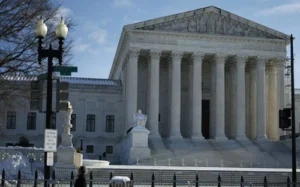In a unique approach to gun rights and public safety, the small town of Kennesaw, Georgia, has gained attention for its controversial ordinance requiring residents to own guns and ammunition. Enacted in 1982, this law, dubbed the “Mandatory Gun Ownership” ordinance, has sparked debates about Second Amendment rights, individual freedoms, and community safety for decades.
A Look at the Ordinance
Kennesaw’s ordinance, introduced in response to a handgun ban in Morton Grove, Illinois, requires every head of household to own and maintain a firearm along with ammunition. The law, however, is not without exceptions. Those who object on moral or religious grounds, individuals with physical or mental disabilities, and convicted felons are exempt.
Proponents of the law argue that it has played a crucial role in deterring crime. City officials often point to statistics showing a significant drop in crime rates after the ordinance was passed. Before 1982, the town’s crime rate was already low, but proponents claim the legislation cemented Kennesaw’s reputation as a safe haven, even as its population has grown from about 5,000 in 1982 to over 33,000 today.

Crime Rates and Community Perception
In the years following the law’s passage, Kennesaw experienced a reported 89% drop in residential burglaries and a 29% decrease in overall crime. Many residents and local officials credit the ordinance for these figures, arguing that the mere knowledge that most households are armed creates a strong deterrent for potential criminals.
“I feel safer knowing that our community is prepared to defend itself if necessary,” said Kennesaw resident Sarah Johnson, who has lived in the town for over 20 years. “It’s not about forcing anyone to carry a weapon—it’s about creating a culture of security.”
Critics, however, challenge this narrative, questioning whether the ordinance alone is responsible for the town’s low crime rate. They cite other factors, such as socioeconomic stability, police presence, and community engagement, as significant contributors to Kennesaw’s safety. Furthermore, some argue that the ordinance could encourage a false sense of security or potentially increase the risks of gun-related accidents.
Legal and Ethical Concerns
The ordinance’s legality hinges on the Second Amendment, which guarantees the right to bear arms. While federal law protects this right, Kennesaw’s mandate takes it a step further by requiring gun ownership. Legal scholars have debated whether such mandates infringe on personal freedoms, particularly for those who do not wish to own a firearm.
“It’s a delicate balance,” explained constitutional law expert Dr. Maria Hernandez. “The Second Amendment protects the right to bear arms, but mandating that right raises questions about individual autonomy. The exemptions help, but the principle of forcing gun ownership remains contentious.”
Despite these concerns, the law has never been actively enforced, and no penalties exist for non-compliance. Instead, the ordinance serves more as a symbolic statement supporting the Second Amendment and gun rights. Critics, however, question the practicality of a law that exists largely for symbolism.
Broader Implications
Kennesaw’s ordinance continues to fuel debates about gun rights, public safety, and personal freedoms in the United States. Supporters argue that the town’s experience offers a compelling case study for how widespread gun ownership can deter crime. They believe the ordinance underscores the importance of the Second Amendment in ensuring citizens’ ability to protect themselves.
Opponents, meanwhile, caution against using Kennesaw as a universal model. They stress that the success of such a policy may depend heavily on unique local conditions, such as community cohesion and responsible gun ownership practices. Critics also highlight the risks of normalizing mandatory gun ownership, including potential increases in firearm-related accidents or misuse.
The National Conversation
As debates about gun control and Second Amendment rights continue across the U.S., Kennesaw’s ordinance remains a polarizing example of local governance in action. For some, it represents a bold affirmation of constitutional rights and a proactive approach to safety. For others, it is a troubling example of government overreach and misplaced priorities.
Whether viewed as an innovative policy or a relic of a bygone era, the Mandatory Gun Ownership ordinance keeps Kennesaw at the center of America’s ongoing conversation about guns. For now, the town remains a living experiment, offering lessons—and sparking debates—that resonate far beyond its borders.















